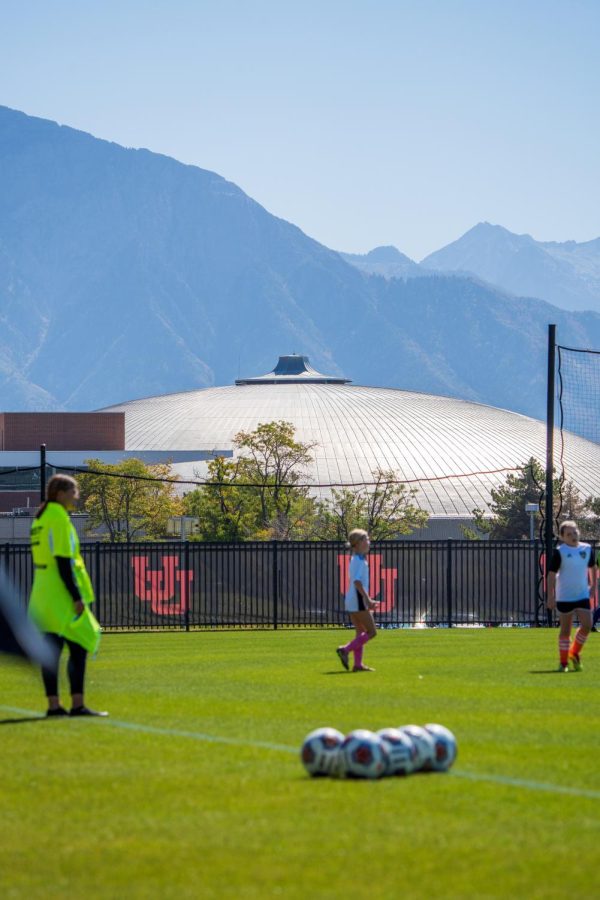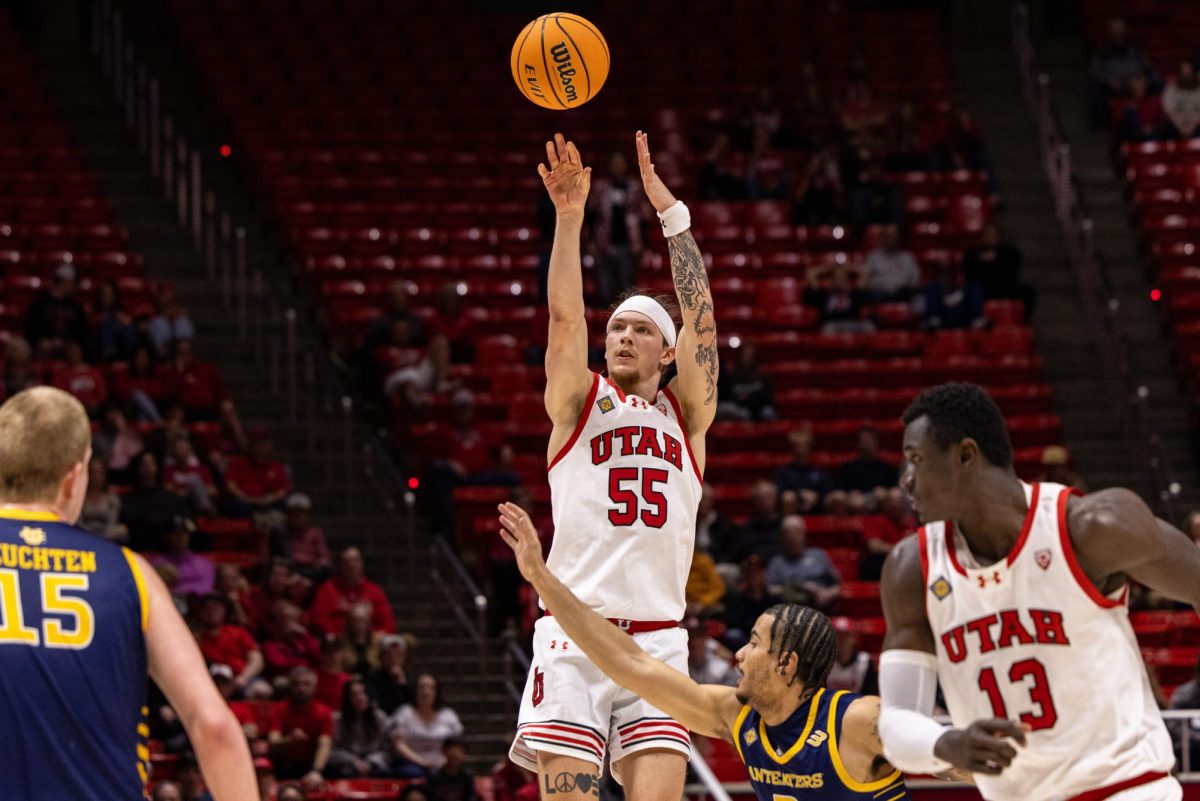Salt Lake’s Air Quality and Its Impact on Outdoor Athletes
(Photo by Jonathan Wang | The Daily Utah Chronicle)
November 2, 2021
Salt Lake City’s air quality is often, quite frankly, atrocious. This is especially true during the winter when inversion plagues the Salt Lake Valley, as well as this past summer when the fires across the West Coast caused Salt Lake City to have the worst air quality of any city in the world on two separate occasions. Long-term exposure to poor air quality has been linked to a variety of health issues, even for otherwise healthy citizens without preexisting conditions. With this in mind, what are the risks of playing sports in polluted air, and just how big of a threat does this pose to outdoor athletes at the University of Utah?
This past summer, as fall sports at the U prepared for their season while fires ravaged the west coast, the average daily air quality index (AQI) in Salt Lake City reached above 50 for 13 out of the 31 days in August. According to the Environmental Protection Agency, an AQI above 50 is considered poor, and anything above 100 is considered unhealthy for sensitive groups, a metric which Salt Lake City passed a handful of times in August. The AQI reached a peak of 300 this summer, causing the U’s women’s soccer team to cancel practice and forcing the football team to move practice indoors.
The risk of developing adverse health effects from pollution has been greater in Salt Lake City in recent months than it is during traditionally polluted winter months, in large part due to the fact that this summer’s pollution was largely caused by fires, which contain higher levels of the toxic pollutant pm2.5. The U’s Honors Praxis Lab on Air Quality, Health and Society states that when inhaled, pm2.5 enters the air sacs in your lungs, and the presence of pm2.5 in your lungs is often permanent, increasing the risk of developing asthma and lung cancer. Furthermore, when pm2.5 enters the bloodstream, it swells blood vessels which has been linked to an increased risk of heart disease.
When the air quality is poor, athletes at the University of Utah are at greater risk than average citizens for inhaling pollutants such as pm2.5. It is worth noting that the average person takes approximately 15 breaths per minute at rest and up to 40 to 60 breaths per minute during exercise. So while the AQI might be considered safe enough for outdoor sports to take place, athletes are undoubtedly at a greater risk for inhaling higher levels of pm2.5 when exercising outside than the average person would be in identical conditions.
With the risks to U athletes should they perform in poor air quality established, how prone are athletes at the U to being exposed to these risks? Gavin Gough, associate athletics director for Facilities, Operations, and Capital Projects at the U, claims that this has not had as big of an impact on the University’s athletes as one might think. Gough, who is in charge of deciding whether athletic competitions should be held based on environmental factors such as air quality, fully acknowledges the risks associated with pollution, and he says the university strictly abides by NCAA recommendations as well as Pac-12 guidelines regarding pollution safety standards.
“It’s actually been something we haven’t had to think too much about. Our policies have simply stayed in line with the conference. It’s never really gotten to the point where we’ve had to cancel games,” said Gough.
Indeed, no games have been canceled because of poor air quality at the University of Utah, only a couple of practices have in recent months. Despite Salt Lake City’s reputation for poor air quality, Gough asserts that poor air quality does not plague Salt Lake City year-round like other Pac-12 cities.
“It’s not been a bigger issue for Utah than other universities, it’s actually a bigger issue for California universities,” Gough said. “For us, it’s mostly just been weather patterns and fires recently, and we don’t really have any outdoor sports in the winter when the air is particularly bad.”
The potential negative long-term impacts of exposure to poor air quality, especially for athletes, have been well-documented. However, Salt Lake City’s notoriously bad pollution usually occurs during the winter, when outdoor sports at the University of Utah are not in season. Outdoor athletes at the University of Utah dealt with poor air quality this summer, however, the risks were minimized in accordance with NCAA and Pac-12 safety standards.









